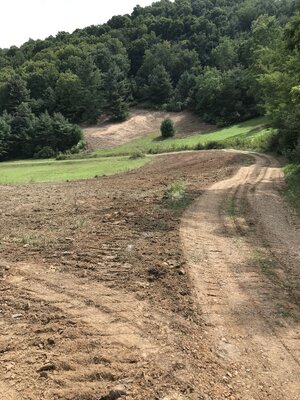Well, in general, it depends on the situation and your soils. For example, if you have heavy clay, heavy equipment like a dozer can compact it. Depending on the skill of the operator, you may have lots a lot of topsoil. If compaction is not an issue, based on your picture, I would throw and cultipack annuals. In my area, I'd use winter rye and crimson clover. The purpose is to get soil coverage and reduce any erosion on the slope. Those annuals will die on their own next year. You can reassess at that point.

